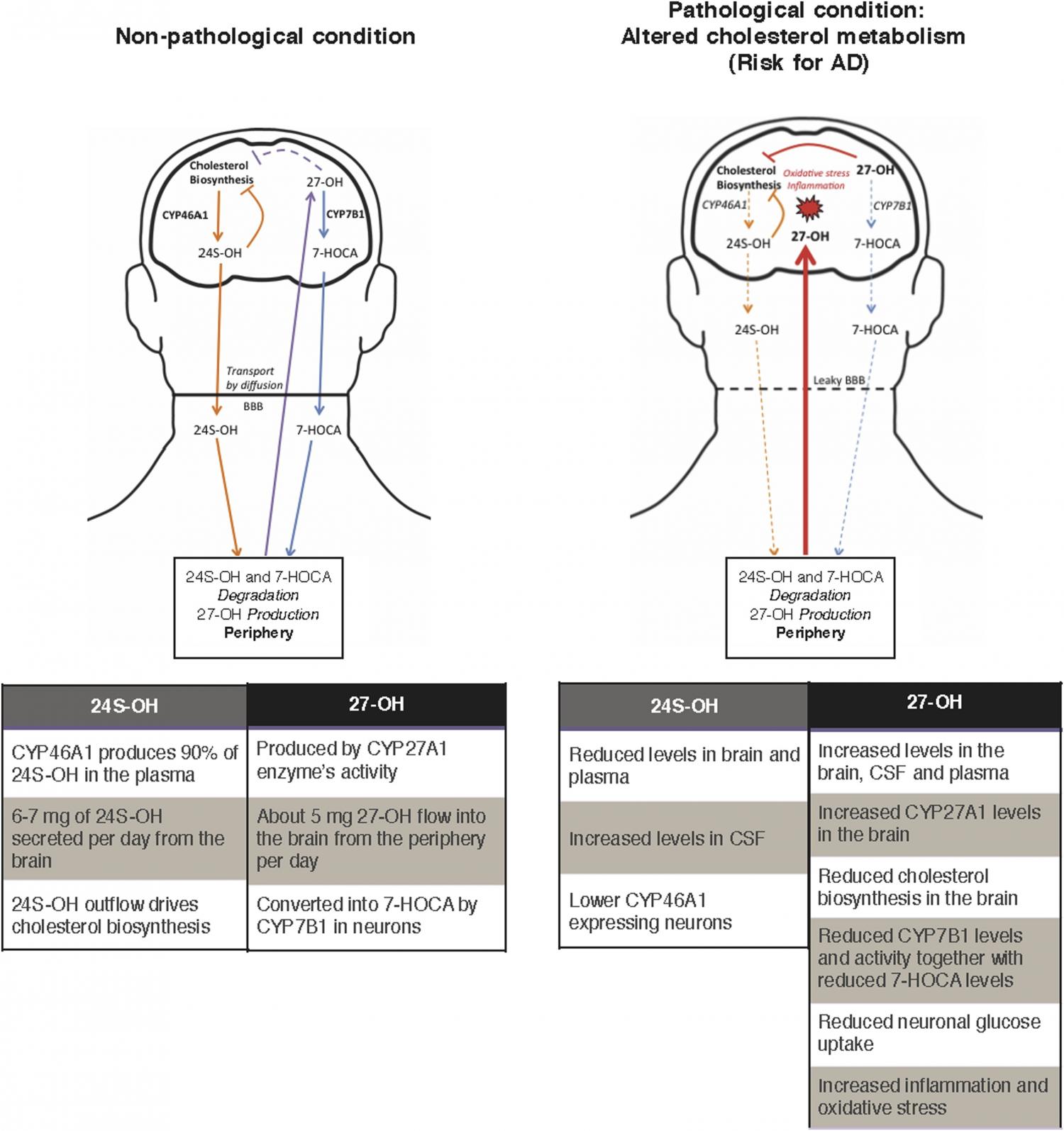
Elsevier, Journal of Steroid Biochemistry and Molecular Biology, Volume 190, June 2019
Alzheimer's disease (AD) is the most common form of dementia and it is characterized by the deposition of amyloid-β (Aβ) plaques and neurofibrillary tangles in the brain. However, the complete pathogenesis of the disease is still unknown. High level of serum cholesterol has been found to positively correlate with an increased risk of dementia and some studies have reported a decreased prevalence of AD in patients taking cholesterol-lowering drugs. Years of research have shown a strong correlation between blood hypercholesterolemia and AD, however cholesterol is not able to cross the Blood Brain Barrier (BBB) into the brain. Cholesterol lowering therapies have shown mixed results in cognitive performance in AD patients, raising questions of whether brain cholesterol metabolism in the brain should be studied separately from peripheral cholesterol metabolism and what their relationship is. Unlike cholesterol, oxidized cholesterol metabolites known as oxysterols are able to cross the BBB from the circulation into the brain and vice-versa. The main oxysterols present in the circulation are 24S-hydroxycholesterol and 27-hydroxycholesterol. These oxysterols and their catalysing enzymes have been found to be altered in AD brains and there is evidence indicating their influence in the progression of the disease. This review gives a broad perspective on the relationship between hypercholesterolemia and AD, cholesterol lowering therapies for AD patients and the role of oxysterols in pathological and non-pathological conditions. Also, we propose cholesterol metabolites as valuable targets for prevention and alternative AD treatments.
